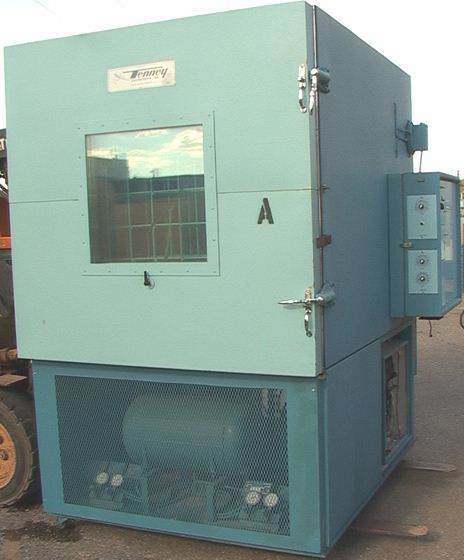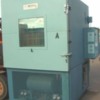Paul ISAAC
Paul ISAAC
I've been reluctant to weigh in on this because my experience is all Dellorto. While Dells and Webers are very, very similar, there are some minor differences in adjustment ranges, etc. However, the carbs are very similar. The possibility of a torn/blown out intake manifold gasket has been talked about and skipped over to some extent. I've never had any success (like 0/100) finding an intake leak with carb cleaner, WD40, ether, or anything else-- because the leaks are very, very often in the web between the intake ports, where they get super-close. The only way you can eliminate that as a possibility is to take the intake manifolds off, and if you take them off, you'll need new gaskets anyhow. Forewarned is forearmed.
Regarding the difficulty of access to the accelerator pump adjustment:
Pan-based cars don't afford very much room outboard of the carbs in the engine compartment. You might have better luck accessing all of the stuff by just removing the carbs from the intake manifolds (one at a time). Sometimes, just going ahead with the "harder" thing is easier in the long run.
Also, I've always wondered about cutting access holes in the panel that separates the engine bay from the wheelwell. Nice looking cover-plates could be fabricated easily enough, and while you'd need to jack the back of the car up and remove the wheels to get to the carbs through these panels, it's also make changing the number 1 and (especially) the number 3 plugs much easier as well. I've got more room, so it's nowhere near as big a deal for me, but every time I see a CMC/JPS/VS or early IM engine bay, I think that I'd do it for sure if it were me. I'm a fat-fingered primate though-- you may have the limber dexterity I lack.
Either way, it seems like both Jim and Danny have good answers for you. The take-away is that if you need more than 2 turns out to keep the car from popping, there's probably another issue.
Bruce Stumpp cut access holes in his narrow-bodied Vintage Speedster. I think they were marine-something-or-other, and about 6" in diameter. He says they help a LOT, and also for spark plugs.
I wanted to do the access holes but my oil cooler is in the way.
I am about to change my plug wires and I will remove the air cleaners to improve access a bit.
I think my DCNF carbs are a little easier to work around than IDFs or IDAs.
Aircooled.net sells 5" diameter access panels for $17.95.
Carl Berry had a bunch if those in his stash when he passed. His were “deck plates” from West marine, about 6” diameter with a cover that unscrewed.
I always thought that a 6” X 11” rectangular Marine Inspection hatch would be perfect for access to the spark plugs from the wheel well, but never got around to installing them.
Hey Paul
Have you figured everything out? What is the status.
Hope all will be well🤞.
Thanks to all who helped.
Paul ISAAC
And once again....... A carb problem was solved by an ignition fix.
I can just hear @Stan Galat in my head: "90% of carb problems............"
@Phisaac posted:I take it this issue is not rare?`
Your images didn't come through.
And yes, it's common. 90% of all carburation issues are ignition.
Paul,
That is great news. I have had issues with the Magna Spark dry pack coil. I had two go bad on me.
Paul
Paul ISAAC
What type of coil do you have now? As long as you don't have the Magna spark dry coil pack you are probably fine. I just had a bad experience with the them.
Paul ISAAC
Thanks
Paul
Paul ISAAC
@Bobby D posted:What type of coil do you have now? As long as you don't have the Magna spark dry coil pack you are probably fine. I just had a bad experience with the them.
I had a "Bosch Blue"* coil and had issues with it. Until I used an analogue multimeter to check it and found it out of spec. After I'd chased "carburetor problems" for a month.
Stan knows whereof he speaks.
* Probably the Chinese crap that they sell as Bosch Blue coils these days.
@Phisaac posted:Maybe I should replace the coil as well? I had several issues going on. Carbs dirty and gunked up along with a sticking float. Plus accelerator pumps not pushing enough fuel. Once the parts arrive I will know if all good.
Paul
Paul ISAAC
Do you have a multimeter?
"Use an Ohmmeter to test the coil.
Remove all the wires taken off the terminals of the coil attach the positive and negative, red and black, wires of the meter to first the terminal 15 (positive) and 1 (negative) that are stamped on the coil.
A reading of at least 3 - 4.5 ohms, indicates a good coil.
A bad coil will show a higher reading then 3 - 4.5 ohms.
Place the red or black lead from the meter to the center of the coil (secondary post), and to either one of the terminals, 1 or 15 on the coil.
A reading of 9,500 - 10,000 Ohms, sometimes less, indicates a good coil.
A reading of 11,000 Ohms or more, or a reading of zero indicates a bad coil."
Paul
I have a Pertronix Flamethrower coil. I also have a Bosch Blue that is on the shelf that worked good too.
I’m curios as to where you folks have your coil mounted? If it is attached to the fan shroud or with a bracket holding it above the engine case next to the distributor, it is subject to “heat sink” when the engine is turned off, especially in hot weather. All the residual heat in the engine case saturates anything mounted above the case. Particular attention must be given to electronic stuff like Pertronix ignition modules and some types of coils. Heat is not their friend. The reason some coils are oil filled is to dissipate heat to let them survive in their environment.
Regardless whether you have a so-called “oil filled” coil (wet pack) or a “dry-pack” that is usually smaller and surrounded by epoxy, it helps their longevity to mount it on the driver’s inner wheel well and away from the case heat.
I ran a MagnaSpark I dry pack for 30,000 miles with no issue, then replaced it with a Mark II version (all I wanted was the newer MagnaSpark II disti, and the new coil came in the box, too) still no problems. Both were mounted off to the side on the wheel well panel.
Just food for thought.
.
A few random thoughts.
I’ve been running a Magnaspark II for a few years now. I put it in to fix some serious spark scatter I had with a Pertronix-branded 009 knockoff. It did the trick. The mechanical spark advance bits in the MS seem to be much better quality than the corresponding stuff in today’s Chinese 009 repops.
So, this was another example of ignition problems masquerading as ‘carb’ problems. The symptoms had been a slight miss in the ‘transition’ range between idle and about 2000 rpm. This is where many people have the most trouble getting their carbs sorted out, but if spark isn’t solid and consistent there, no amount of carb tweaking will do any good. And, since it’s a fairly simple thing to check the spark consistency with a timing light, it just makes sense to do that before messing with some ornery carburetors.
Also, the Magnaspark is perfectly happy (on a VW engine, at least) with an old-school Bosch coil. The MS folks will tell you this (in the fine print) but they’d much rather you buy one of their fancy-Dan gluten-free designer dry coils. I’ve been using the same old coil I did with my old dizzy and it’s been just swell. Do check yours out to make sure it’s OK, though. And yes, as Gordon suggests, my coil is mounted on the side panel of the engine compartment, as far from heat sources as possible.
Coaxing these engines into tune is a process that should follow some clearly defined steps. The carbs are complicated, finicky devices. Our basic ignition systems are simple. Do the simple part first just to eliminate that as a source of trouble. Then, move on to the carbs.
If you’re really lucky, you may not have to.
.
Gordon
You might be right about the heat killing the coil. I had my magna spark dry pack mounted to CB fuel block off coil mount plate. It sits in the valley between the distributor and the fan shroud. My new coil is also mounted in the same area. I should probably move it up higher.
Better yet to move it away from the engine and mount it on the left side of the engine compartment. You'll need a longer coil wire to the distributor, and most probably have to extend the coil hot, points trigger, and tachometer wires.
Paul Isaac
Sent from my iPad
> On Jan 2, 2021, at 6:05 PM, SpeedsterOwners.com <alerts@crowdstack.com> wrote:
>
>
One of the poorly kept secrets of electronic semi-conductors is that they're quite susceptible to high heat. Electronics that you use in your house or even in a car's cockpit don't see a lot of heat - maybe 140F max - but those in the engine compartment see a LOT of heat in massive swings from startup to 20 minutes after shut-down. That, and vibration, cause them to fail over time. Components CAN be designed and built to withstand greater temperature extremes (like "Military Spec" parts), but they cost more. There are also several levels of "commercial grade" depending on the demands of the design and environment.
As an aside and totally not connected to carburetor problems, did you ever wonder how some computer companies test out failures like this for a more reliable product?
My last company blazed the trail in the computer storage industry for running our production computer boards through a near-Mil-Spec factory test series of temperature and vibration swings to weed out system failures at the factory. At the computer board level we used "Tenny" chambers like this:
They were giant ovens with a shake table inside. We could fit four full computer systems inside at once (Each system is a card cage the size of a large Microwave oven) and run them on simulators doing actual work while the chamber would cycle from 0F to +145F (-17C to +65C ) and back to 0F (we flooded the hot test chamber with Nitrogen gas to drop the internal temperature, then re-heated it and repeated). While it was temp cycling, it would also run through a vibration profile from 20 hz to about 3K hz. All of this would run 24/7 for 2 weeks at the board level and then another 2 weeks at the system level. Everything going on was recorded and analyzed by automatic programs to give us failure data down to the transistor level.
Full Systems were about the size of a kitchen refrigerator, or two, or three wide depending on what system was bought, so we had huge rooms, the size of a Football field, that would run at either 40F or 122F (we couldn't go farther than that because people worked in there running test programs or moving systems in and out between rooms). Here's a typical room:
The system would spend a few days in one room, then get moved to the other (running over a grooved vibration floor between) and back and forth for 2 weeks while we looked for further system-level failures.
So what did all this get us? Well, before we went to this form of testing we had about a 40% install start up failure rate and an in-service failure rate of about 25%. We also had a field service technician force of about 500 people to service a yearly output of about 2,000 systems. Once we instituted the new factory test profile we were shipping just under 3,000 systems each quarter, ramping up to about 20,000 per year when I left. Our install start up failure rate was about one in every 2,000 systems shipped (usually an interconnection/connector problem) and the in service failure rate was less than 1% (seven sigma, for you quality geeks). That was unheard of in our industry.
During that time as we ramped up production, we chased failures back to their root cause and then designed in stronger/better parts throughout the system. We also increased the field tech force from 500 to 1,200 people, which was about 75% less people than our competition, while we got the reputation that, not only was our product line the fastest out there, but "EMC stuff doesn't fail", both of which allowed us to cover all of those extended test costs and charge a premium for our products.
It just goes to show, that building in Quality sells.
Attachments
Back when the earth was cooling I was 19 working for one of the original CAD/CAM companies. We had big clients like Lucas Films (we did the war table sceen -which now looks pathetic) and GM, etc.
They'd send the board back with like 50-75 chips per board. We'd look at the blueprints but usually whipped out the heat gun. As soon as you saw a vector start to flutter and flip out you knew you had the chip. Our manager felt it was more important to get us to the strip club and beer than waste out time on the production floor. God I miss him.
This was the place where, on my first day, he (my manager) super glued a quarter to the floor (a main walkway) next to me. It was quite a process. Rubbing alcohol etc. and him looking up at me with his southern accent "You're gonna like this!" Break time came and a steady stream of young women headed for the back door. A few saw the quarter and tried to pick it up and naturally... The dirty looks I got on my first day must have been a record. He was over there laughing. But the cleavage and butt shots made for a great first day. ALWAYS take care of your team!







